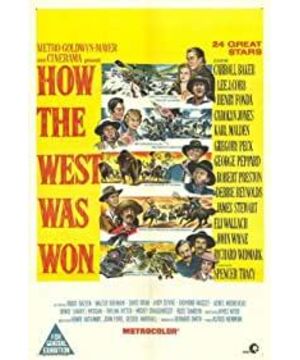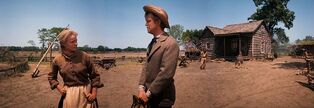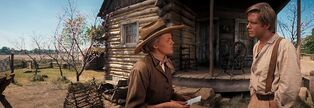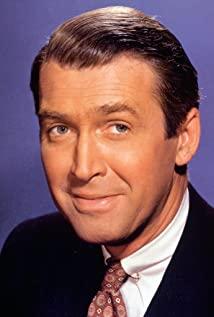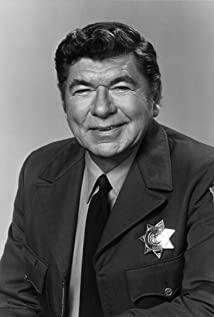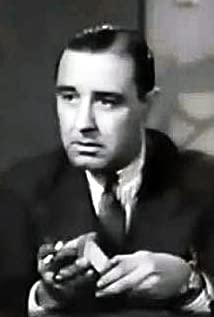What worries me the most before watching the film is the story. Because the English name of "History of Western Development" is "How the West Was Developed", if Chinese candidates were asked to write an essay on the topic of "Western Development" in the college entrance examination, I am afraid it would be overwhelming. Then, after watching these 164 minutes of work, you will understand that propositional movies like "Paris I Love You" and "New York I Love You" are nothing compared to "Western Development History".
"History of Western Development" clearly outlines the development context of the western region in a linear sequence of time through five paragraphs: "River", "Plain", "Civil War", "Railway" and "Outlaws", using several The relationship between the characters and their descendants creates a strong epic feeling, and the script has a comprehensive performance on topics such as love, justice, and bravery. In the context of the development of the west, one by one, touching or thrilling passages can be said to make use of the west. The classic elements of the film have been recombined so that even audiences who are not familiar with Western films can easily feel that feeling. Although I didn't get the best film, the best editing and the best original script really deserved it. Of course, it is disappointing that Alfred Newman's soundtrack only received nominations, because his soundtrack can carry the weight of more than a hundred years before and after the film, and it combines the sense of history with the sense of desolation of the West itself.
The whole work is still divided into the structure of "entrance song, first part, intermission, second part, closing song" according to the consistent style of epic films. In the first part "river", it focuses on how the early Americans The east seeks the story of the new world from the west. Although the three screens of Xinyi Rama have been restored, although there are basically no traces in the whole work, the two seams can still be clearly seen in the close-up of the river at the beginning.
The star of this passage is undoubtedly James Stewart. This angel man who swept the American screen in the 30s and 50s played a positive image for almost his entire life, but in fact, in addition to his regular cooperation with Capra, he also has several classic Western movies and images, which are used in the entire "Western Development History". In, my favorite paragraph is this first paragraph. Through the love and pity between the prodigal son and the innocent woman played by Stewart and several destined encounters, the customs of the early western region can be clearly displayed. It is worth mentioning that at the end of this paragraph, in addition to giving an unexpected end to the relationship between the two people, Hathaway also directed a wonderful river scene. The small bamboo raft encountered danger in the river, and a group of people The thrilling experience of collective "drifting" is extremely exciting. No soundtrack is used, but the effect is better than that of modern blockbuster soundtracks to enhance the sense of thrill.
In the second part of "Plains", the veteran movie star Gregory Parker of "Kill a Mockingbird" and "Doctor Edward" appeared, and partnered with "Song in the Rain" star Debbie Reynolds in a circus romance Ordinary stories reveal a lot of values about material and love, and the carriage battle in the plains is also very effective.
The third part of the "Civil War" only lasted more than 20 minutes. Obviously John Ford was not used to the huge new art Rama three cameras. The absent-minded director made a chewy clip, even the old partner John Way he brought together. Well, there is no arrogance in the slightest.
The fourth part is the "Railway" filmed by George Marshall. It tells the skirmishes and contradictions that occurred during the construction of the railway. Like Wayne's version of "Civil War", it feels that the director is not fully prepared to maximize the use of New Art. The width of Ma, combined with the breadth of the paragraphs created by the script, but a section of Indian buffalo galloping is quite mighty.
The last part of "Outlaws" returned to Director Hathaway, and it really returned to the level of the first two paragraphs, full of visual effects and the atmosphere of the characters. Through the previous construction of the railway and the correspondence with the previous characters, this paragraph can be said to be the ultimate paragraph of the family epic. The train robbery and the gunfight of good and evil, which are common in major westerns, were staged. At that time, the stars joined forces and played together. Xinyi Rama's excellent wide-angle subjective perspective effect, and the last train battle is also impressive.
"Xinyi Rama's Adventure" Highlights:
1. With the development of television, cinema audiences plummeted;
2.1952 In September 2009, a new arts Rama (Cinerama) initial public broadcast;
3. when the new preview clip arts Rama is the roller coaster movie "This is the new Arts and pull "Ma";
4. Xinyi Lama uses three different films to be broadcast on three projectors at the same time, each with a photosensitive area larger than 35mm film, presented on a huge curved screen with a field of view of 146 degrees;
5. Fred ·Waller is the inventor of this technology; The
first experiment in Long Island at the beginning of 6.1948;
7.Henry Hathaway made a careful design on how to use Xinyi Rama to shoot;
8.John Ford’s comments on Xinyi Rama The shooting is very impatient, because there are 3 cameras, he will always accidentally run into the lens;
9. George Paber’s stand-in, Bob, unfortunately had an accident during the shooting and was run over by 15,000 pounds;
10. Finally, The declining popularity of new art Rama shooting is mainly due to the cost of rebuilding the theater and the high shooting cost;
11. "This is a crazy and crazy world" is a fake new art Rama movie, not shot by three cameras;
View more about How the West Was Won reviews


